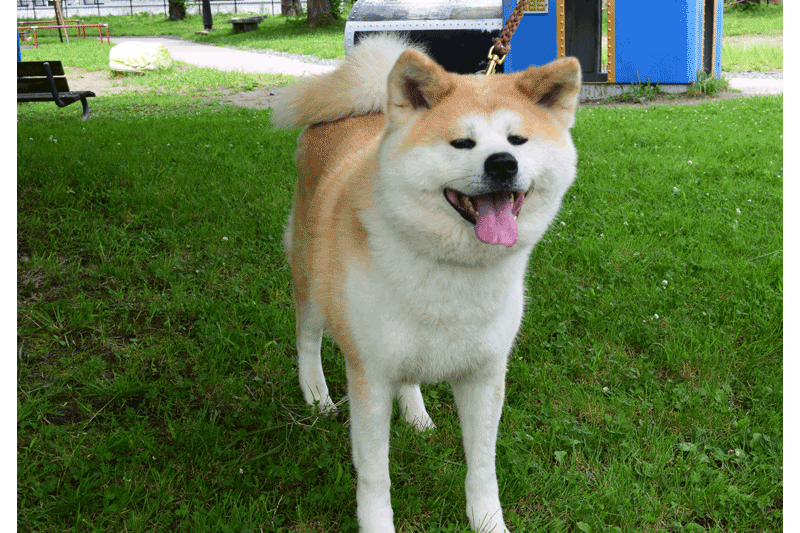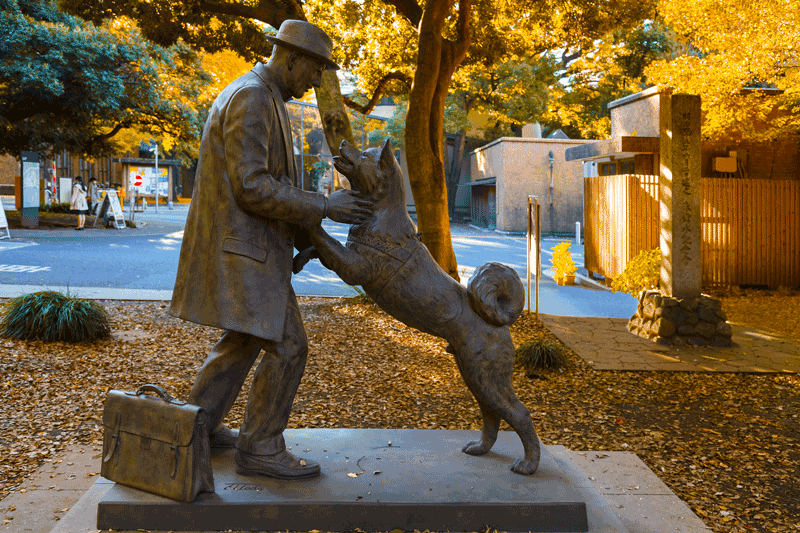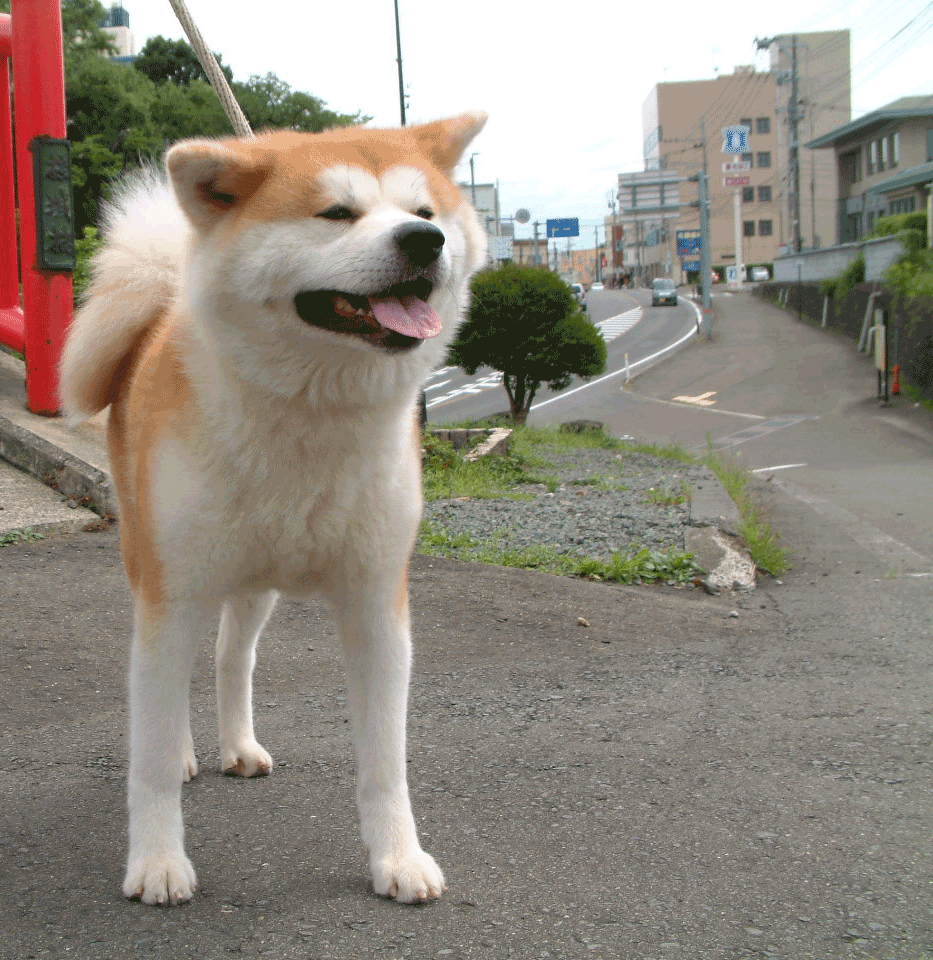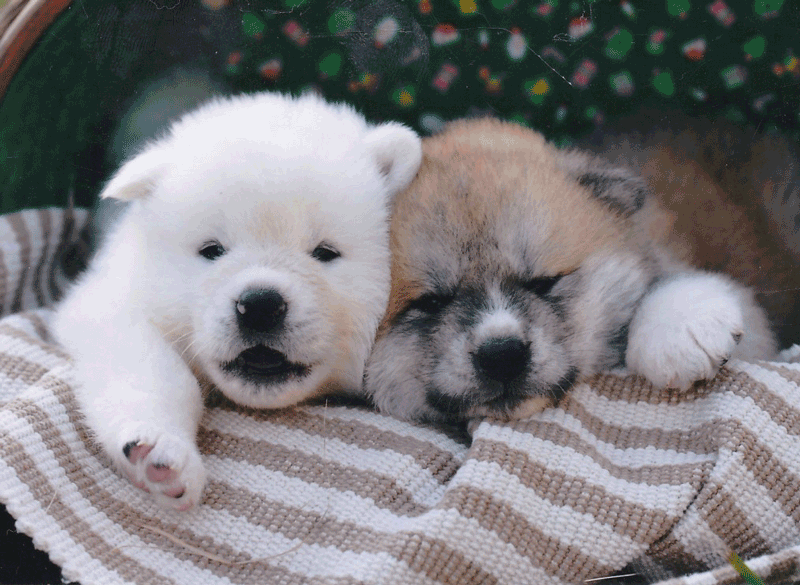From the country’s earliest recorded history to a best beloved tale of animal loyalty, these are a few of the things we cherish about this Japanese dog breed.
1. A Dog Famous for All Time
Even before you set foot in Japan, you probably knew the story of Hachiko. The dog, an Akita that was born in the city of Odate in Akita Prefecture, belonged to Professor Hisaburo Ueno, who taught at Tokyo University. For a year and a half, Hachiko would walk to Shibuya Station, see him off to work, and like clockwork would be waiting for him when he returned. Sadly, the professor died one day at work in 1925. Of course, Hachiko (so named because he was the eighth in the litter) was there waiting at the station for his master. Hachiko returned to the station at the same time every day – for nine years, nine months, and 15 days – until he passed away on March 8, 1935.
2. Celebrated Statues
Hachiko’s remains were laid to rest next to Professor Ueno’s at Aoyama Cemetery. But before he died, he had already been honored for his loyalty: a statue of the dog had been erected in 1934. Reconstructed in 1948, Shibuya’s Hachiko is now a tourist destination as well as, quite fittingly, a meeting place. The dog has gone on to inspire another pair of statues: at the Akita Dog Museum in Odate (see far right), a statue in Hachiko’s likeness waits patiently, facing in the direction of the original Hachiko statue, more than 650 kilometers to the south. Finally, in March 2015, a statue was unveiled at the Department of Agriculture at the University of Tokyo, which depicts a meeting, perhaps in the afterlife, of Hachiko and his beloved master.
3. A Tale Made for Retelling
A tale like Hachiko’s couldn’t help but inspire other works of art as well. The story of this beloved canine has made its way onto the pages of children’s books in the US, and has been brought to life on the silver screen in Japan, the US (in a film starring Richard Gere), and even India.
4. A Deep History
Of course, Hachiko belongs to the entire country of Japan, but it must be remembered that the story, and the breed, begins in Akita. The dog that would become the Akita inu is related to an even older dog breed, known as the Matagi, and it was famed for its size and its hardiness. Some of Japan’s earliest recorded histories include references to dogs that look like the Akita, and pooches with a similar appearance can be found in picture scrolls that date back to the Heian and Kamakura eras. In later periods, the dog that we now recognize as the Akita was celebrated as a guard and hunting dog, capable of chasing down deer, elk, and even bears.
5. The Comeback Canine
Despite the outpouring of love the people of Tokyo showed to Hachiko, the Akita breed was struggling to continue by the early 20th century. A pair of rabies outbreaks had decimated the population of purebred Akita dogs. By the end of World War II, there were as few as a dozen dogs that remained, according to some accounts. But thanks to the dedication of some Japanese breeders and enthusiasts who refused to let this proud line disappear into history, its numbers began to rise again, and now the Akita can be found around the globe, making appearances at dog shows around the world and becoming a part of families everywhere.
6. A Canine with High Standards
Given its history as a hunting and guard dog, you would expect the Akita to be a large breed, and it is: male Akitas stand 24-26 inches (60-66cm) at the shoulder and can weigh up to 120 pounds, while females stand 22-24 inches (56-60cm) and can weigh as much as 110 pounds (50kg). They have thick heads that almost look bearlike, and are topped with triangular ears. A thick double coat would have helped keep the dog warm during the cold winter months. The upcurled tail, which you can also see on the smaller Shiba inu, is both part of the breed standard and is undoubtedly a charming feature for its owners.
7. Every Dog Has Its Day
While the famous Hachiko is honored every year with a special ceremony on April 8, the city of Yuzawa holds a yearly festival in the middle of February that includes an homage to the Akita inu. During the Akita Inu-kko, which has been celebrated for more than 400 years, the copious snowfall that hits the region is used to make miniature versions of Shinto shrines, and plenty of canine inhabitants. Many breeds of dogs can be found among the snowy pack, but the pure white Akita inu holds a special place of pride.
8. The Akita Dog Museum
Dog lovers who are making their way north should definitely visit the city of Odate, where they can visit the Akita Dog Museum, which was built to honor the storied breed that is associated with the region. Built in recognition of the 50th anniversary of the foundation of the Akita Dog Preservation Society, the museum is open from 9am to 4pm. Until November, visitors can see an Akita inu just to the right of the main museum building. Admission to the museum is ¥100 for adults and ¥50 for children, and considering the sheer amount of information available about this noble animal, it is well worth the visit, for dog lovers or anyone whose heart was touched by the story of loyal Hachiko.
The Akita Dog Museum
Sannomaru 13-1, Odate City, Akita Prefecture
www.akitainu-hozonkai.com/index.html
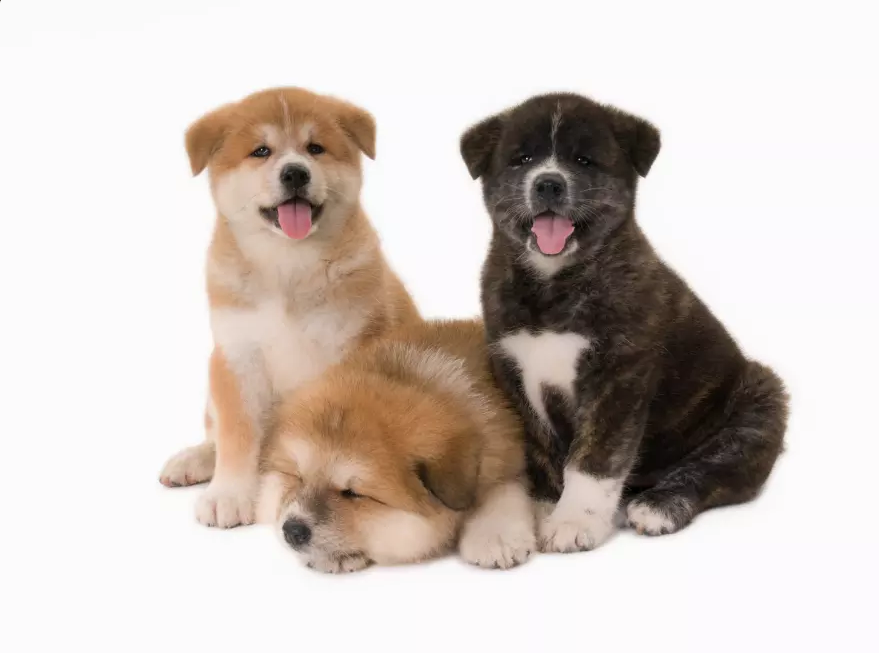
PLAY WITH AKITA INU
DINE OR DRINK WITH THE AFFECTIONATE DOG IN TOKYO
VISIT THE AKITA DOG MUSEUM AND MEET THE CUTE DOGS!
For an extra 5% off use our coupon code TOKYOWEEKENDER during check-out.
Updated On December 28, 2022

